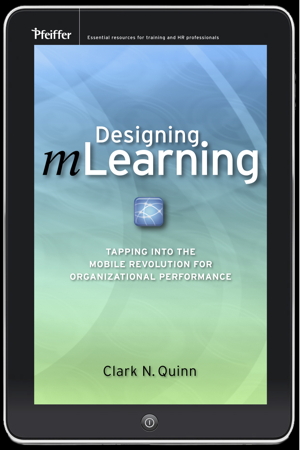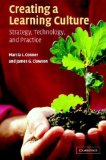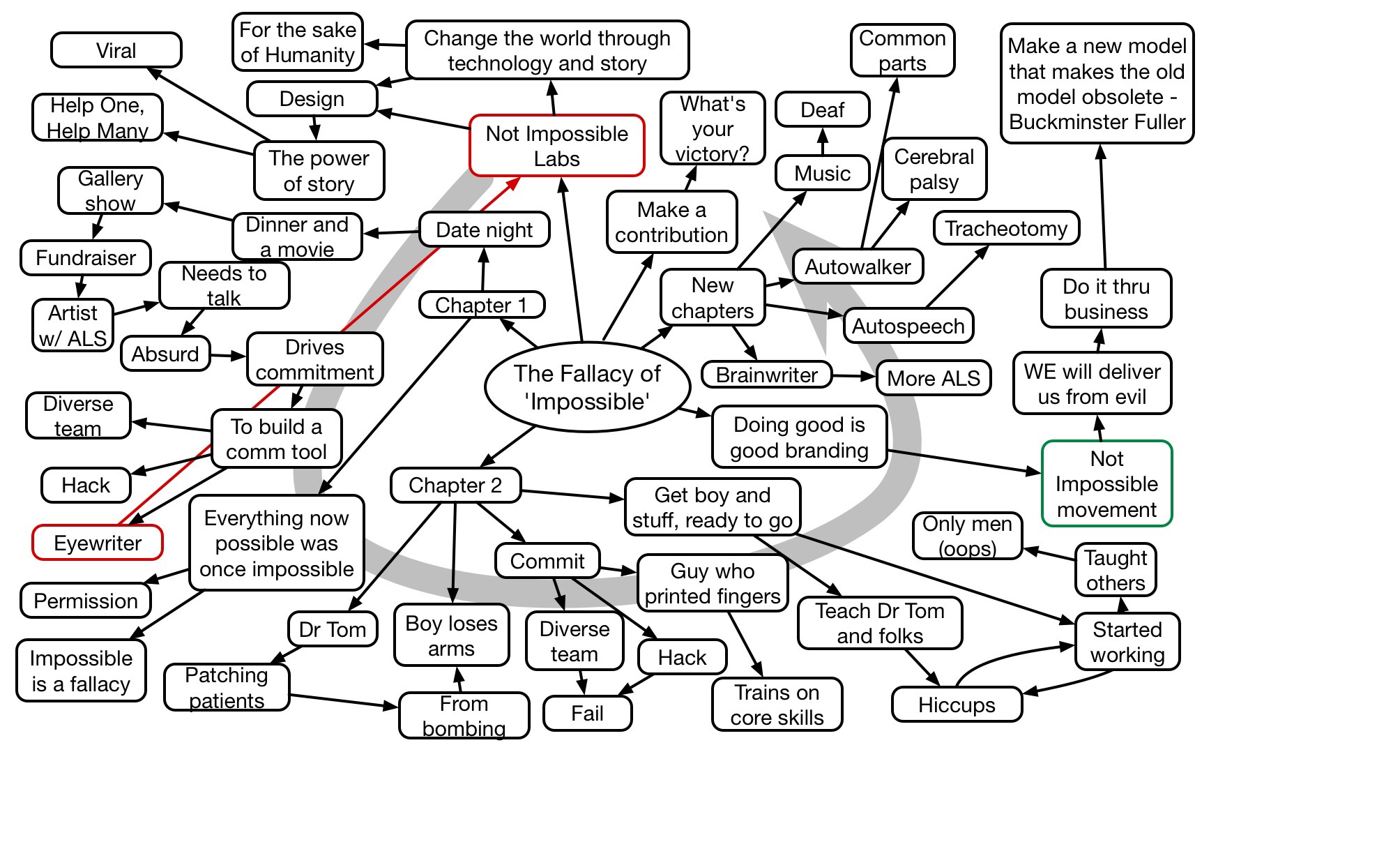Mick Ebeling, of Not Impossible Labs, opened the TechKnowledge conference with an inspiring keynote. He told engaging stories about achieving the impossible because it just took commitment. He evangelized contributing, and getting contributions by emphasizing the brand benefits of doing good.
A Cognitive Audit?
 In the recent Chief Learning Officer magazine, I wrote an article on the basics of the cognitive science of learning. Given the evidence that “L&D isn’t doing near what it could and should, and what it is doing it is doing badly, other than that it’s fine” (as I say), at least one of the potential barriers is that L&D isn’t truly aware of what science says about their profession.
In the recent Chief Learning Officer magazine, I wrote an article on the basics of the cognitive science of learning. Given the evidence that “L&D isn’t doing near what it could and should, and what it is doing it is doing badly, other than that it’s fine” (as I say), at least one of the potential barriers is that L&D isn’t truly aware of what science says about their profession.
And I truly believe that if you’re a professional, you should be aware of the fundamental scientific basis of your profession. Pilots need to know aeronautics, physicians need to know physiology, etc. And therefore, I reckon L&D needs to know the cognitive background. But there’s more.
Knowing a suitable level of cognitive science is one thing, using that to assess your practices is another. Too often, we have what we call ‘inert knowledge’: we know it, but we don’t apply it. That’s not helpful. What has to happen is that processes need to be evaluated, improvements identified, interventions prioritized, enablement enacted, and progress reviewed. It’s just part of being a professional!
There are other sorts of audits possible (I know folks who do performance audits, and knowledge audits, etc), but I’m increasingly thinking that the one that matters is the one that aligns with how our brains work. Not at the neural level (there’s little of impact there), but at the cognitive level. Note that cognitive science includes social, conative and affective components (e.g. the culture and motivation), and neural, for that matter ;).
This isn’t an academic exercise. The increasing competition enabled by technology already suggests that optimal execution is only the cost of entry, and continual innovation will be the only sustainable differentiator. Both are cognitive functions, and the best outcomes will only be achieved when organizations are acting in accordance with how we think, work, and learn. This is about equipping your organization to kick some proverbial tail.
I’m drafting an initial such instrument, with associated recommendations. I welcome your thoughts, and any interest in engaging around this.
Vale Seymour Papert
Imagine my surprise that I missed the demise of Seymour Papert this past year (yet another loss). I’ve looked back to see what I was doing on 31 July and how I missed it, and we were preparing for a week in the wilderness. So it’s certainly likely I wasn’t deeply involved in the news. This is a shame, because I’ve been a fan of Papert’s work for quite literally decades. So here’s a belated tribute.
My first job out of college was designing and programming educational computer games. I’d been exposed to some innovative thinking through my undergraduate thesis advisors, Hugh Mehan and Jim Levin. Having read Papert’s Mindstorms, I gave it to my parents to help them understand why I did what I did (unsuccessfully ;). The book is subtitled “Children, Computers, and Powerful Ideas”, and argued that learning computing was a vehicle for learning to think.
Papert had studied with Jean Piaget, and proceeded to be a leader of the constructivism movement applying the notion of exploratory learning environments. I subsequently learned about Piaget (and post-Piaget, and Vygotsky) in my graduate studies, so I can see how the notion of developmental readiness and opportunities to create understanding through exploration could lead to the work Papert did.
Logo, the computer language for learning, was developed by Papert along with Wallace Feurzieg. It’s simple commands controlling a ‘turtle’ and gradually getting richer play challenges was the start to computer understanding for learners for decades, and has influenced computer language learning in many ways. Apple’s Playgrounds uses similar small steps to control a creature to start teaching Swift.
He was invited to co-lead the MIT AI lab with Marvin Minsky. He worked with Minsky on Perceptrons, which were an early exploration of the connectionist networks now so prevalent in artificial intelligence. There remains a controversy over whether and how the book influenced research in the area of symbolic and sub-symbolic intelligence approaches.
Papert was instrumental in much of the thinking that has shaped what we do in learning technology. I’m grateful for his contributions.
Mobile Lesson
 I’m preparing my keynote for a mobile conference, and it’s caused an interesting reflection. My mlearning books came out in 2011, and subsequently I’ve written on the revolution. And I’ve been speaking on both of late, but in some ways the persistent interest in mobile intrigues me.
I’m preparing my keynote for a mobile conference, and it’s caused an interesting reflection. My mlearning books came out in 2011, and subsequently I’ve written on the revolution. And I’ve been speaking on both of late, but in some ways the persistent interest in mobile intrigues me.
While my services are pushing the better design of and the bigger picture of elearning, mobile isn’t going away. My trip to China to keynote this past year was on mlearning (and one the year before), and now again I’m talking on the topic. What does this mean?
As I wrote before, China is much bigger into mobile than we are. It’s likely because we had more ubiquity of internet access and computers, but they’re also a highly mobile populace. And it makes sense that they’re showing a continuing interest. In fact, they specifically asked for a presentation that was advanced, not my usual introduction.
I’m also going to be presenting on more advanced thinking to the audience coming up, because the entire focus of the event is mlearning and I infer that they’re already up on the basics. The focus in my books was to get people thinking differently about mobile (because it’s not about courses on a phone), but certainly that was understood in China. I think it’s also understood by most of the developers. I’m less certain about the elearning field (corporate and education), at least not yet.
In many ways, mobile was a catalyst for the revolution. I think of mlearning as much more than courses, and my models focused on performance support and social more than formal learning. That is really one of the two-fold focuses on the revolution (the “L&D isn’t doing near what it could and should”; to complement the “and what it is doing, it is doing badly” :). In that way, these devices can be a wedge in the door for a broader focus.
Yet mobile is just a platform for enabling the type of experiences, the types of cognitive support, as any other platform from conversation to artificial intelligence. It is an important one, however, with the unique properties of doing things whenever & wherever you are and doing things because of when and where you are.
So I get that mlearning is of interest because of the ubiquity, but the thinking that goes into mobile really goes beyond mobile. It’s about aligning with us, supporting our needs to communicate and collaborate. That’s still a need, a useful message, and an opportunity. Are you mobilizing?
Socio-cultural engineering?
 Let’s not start off the new year being trepidatious, shall we? Ok, social engineering and cultural engineering have bad connotations in a number of ways. Yet, if I can talk about learning engineering, the desirable properties of cultures for learning, and moves in that direction, aren’t we really talking about socio-cultural engineering? Can sense be made?
Let’s not start off the new year being trepidatious, shall we? Ok, social engineering and cultural engineering have bad connotations in a number of ways. Yet, if I can talk about learning engineering, the desirable properties of cultures for learning, and moves in that direction, aren’t we really talking about socio-cultural engineering? Can sense be made?
To start with, let me posit that there’s fairly good convergence on the elements that contribute to an effective ‘learning culture’: there needs to be purpose, explicit description and development of skills, tapping into diversity, making it safe to share, responsibility, and more. The point is that we know what makes environments where the best ideas are generated, developed, and put into practice.
The second thing we know, with less certainty but growing awareness, is how to get there. It’s a ground game: being clear, working hard, walking the walk. It’s not easy, as the stories of when the committed leaders moves (or is moved) on and subsequent regression bear out. Yet it can be, and has been, done.
So, if we’re choosing cultural values, and working towards them, both in ways that reflect what science tells us about doing our best, aren’t we really doing such engineering? Yes, social engineering also refers to another means for breaking security systems. And cultural engineering has various legacy implications including ‘culture’ (read: theatre, music, etc) and even misguided political movements in the past. Maybe we need a better term, but I think the concept of moving in a positive environmental direction is something to be considered systematically.
The open question is, does this make sense at a societal level as well? Ok, not going there. But regardless, I reckon that there’s a strong link between learning and the organizational culture. Organizational Development, I guess, is the field that does this, though they seem to not focus on actual skills as much as facilitation. That’s not a bad start, but perhaps there’s an opportunity to break down silos here. Getting these elements aligned. Which, of course, is an organizational change. Pondering, and I welcome your thoughts.
2016 Reflections
![]() This is the last Learnlet for 2016, and so it’s time for some reflections on what has been an ‘interesting’ year. I’ll admit it’s been rough, what with losing so many people known through popular media. I guess you get to an age where more and more people who’ve you’ve grown up with in one way or another begin to pass on. And of course serious changes nationally and internationally. But there are some learnings as well.
This is the last Learnlet for 2016, and so it’s time for some reflections on what has been an ‘interesting’ year. I’ll admit it’s been rough, what with losing so many people known through popular media. I guess you get to an age where more and more people who’ve you’ve grown up with in one way or another begin to pass on. And of course serious changes nationally and internationally. But there are some learnings as well.
So, I did a fair bit of speaking in 2016, keynoting conferences in New York and Beijing, as well as more private events live and online. I spoke about mobile learning, deeper learning design, innovation, as well as the L&D revolution. And, of course, I attended the usual suite of industry conferences, notably the eLearning Guild events and Online Educa. I also was engaged in a number of consulting engagements, working with folks to deepen their understanding (and mine), to achieve meaningful outcomes.
One learning is the value of travel outside the US. I actually lived outside the US for 7 years (in Australia), and the perspective of seeing how others live, and looking at the rest of the world (and back at the US) from other perspectives is a valuable grounding. The view I had of China before my recent trips was quite different than the reality. I can say the same from previous experience with India. It’s too easy to be insular. Instead, it’s helpful to be curious.
And that’s an industry comment too. I continue to talk (e.g. my workshop in Berlin) and write about deeper learning design. And I continue to evangelize about it (c.f. the Serious eLearning Manifesto with my colleagues, and the recent Future of Work project). And yet, the industry seems to continue on in ignorance. The tools still reflect more of a focus on content instead of experience, for instance. Things get better, but surprisingly slowly. How long until we start treating learning design with the appropriate respect? We need to get out of our comfort zone!
There are positive signs. My engagements with Learnnovators has demonstrated that at least some folks care about quality. And I had several client engagements specifically focused on better learning design. There just need to be more efforts in this area. It’s not hard to tweak processes to generate outcomes that not only look like good elearning, but actually have a high likelihood of an impact.
I’ve done a lot of reading this year (most recently The Fifth Discipline, which puts lots of what I’ve learned about organizations into a context). It amazes me that with robust science at the organizational level as well as the learning science level, we still see so much action in organizations (and society) contrary to what’s demonstrably known. There are positive signs here too, but still too few. It’s challenging, as it involves crossing discipline and business boundaries, yet the benefits are promising.
And I think the hype about technology improvements are premature. Wearables continue, of course. And VR has reached the stage where it’s easy to experiment. Yet in each case, we’re still in the stage before standards emerge that will make a real market. AR and content strategy are still nascent, but there’s much potential. Fortunately, analytics is seeing a boon from the standardization around xAPI. We need to stick to the core learning affordances of new technology to truly grasp the potential.
Looking forward, I see much opportunity, as implied by the gaps indicated above. There’s real opportunity for improvement in the use of technology to facilitate outcomes. We can do personal and organizational learning better. We can leverage technology in ways that are closer aligned with how our brains work. As a precursor, we’ll need a broader understanding of cognition, but that’s doable. I’m happy to help ;).
And let me just add a very heartfelt thanks to those of you who I’ve interacted with, this year and in the past. Whether reading the blog, making comments, engaging on social media, attending sessions or workshops, and of course via engagements, I’m very grateful. I hope to connect with you in the future, in any of the above ways or any other. I continue to learn through and with you, and that’s a gift. Again, thank you.
Goodbye 2016, and here’s to making positive changes in the new year. May it be your best yet.
Cultural Alignment
 I was thinking about the ways in which organizations can support performance. That is, we can and should be aligning with how we think, work, and learn. So we can provide tools to support us in the moment, we can provide tools to help us work together, and we can develop people all slowly over time. In short, I was thinking about cognitive alignment, and I was going to write about it, but it turns out I already have! However, I also realized that there was an opportunity to extend that to cultural alignment, and I think that’s important as well.
I was thinking about the ways in which organizations can support performance. That is, we can and should be aligning with how we think, work, and learn. So we can provide tools to support us in the moment, we can provide tools to help us work together, and we can develop people all slowly over time. In short, I was thinking about cognitive alignment, and I was going to write about it, but it turns out I already have! However, I also realized that there was an opportunity to extend that to cultural alignment, and I think that’s important as well.
So, one of the things we can do to optimize outcomes is to give people performance support. In particular, we can provide tools to address gaps that emerge from our cognitive architecture. We can also provide policies about things we’re supposed to do. And that’s all good. However, some of that might not be necessary under the right circumstances.
I was thinking about the specific case of acting in ways that are consonant with the values of the organization. For instance, in a well-known upscale department store chain, the staff have the leeway to spend on the order of $1K to address any emerging customer problem. I reckon the store figures that’s the future worth of a happy customer. And that’s acting in alignment with the culture of the organization.
The point I want to make is that by having an explicit culture in the organization, you might not have to provide performance support. If the desired approach is understood, it can be generated from understanding the organization’s value. If you know what’s expected, you can perform in alignment without needing external clues and cues.
There are clear benefits from a learning organization in terms of innovation and employee engagement, but what about the other side? I suggest that the right culture can also benefit the ‘optimal execution’ side. In short, there’s little reason to do aught but begin a move to a more enlightened culture. At least, that’s what seems to me to be the case. How about you?
Employee Experience
 One of the recent trends has been about ‘customer experience’, focusing the organization on a consistent and coherent customer experience from first exposure through to ongoing product or service use. And this is a ‘good thing’! I’ve participated in the efforts of an organization to achieve it, and can see the real benefits. However, I want to suggest that just as important is the employee experience. This is the goal of a true performance ecosystem and an aligned culture.
One of the recent trends has been about ‘customer experience’, focusing the organization on a consistent and coherent customer experience from first exposure through to ongoing product or service use. And this is a ‘good thing’! I’ve participated in the efforts of an organization to achieve it, and can see the real benefits. However, I want to suggest that just as important is the employee experience. This is the goal of a true performance ecosystem and an aligned culture.
Richard Branson, the successful entrepreneur behind the Virgin brand, argues that the only real way to deliver great customer service is to have really happy employees. And I think that his argument is plausible. We know that when people are engaged, there are good outcomes like greater retention. Happy employees is a necessary step to happy customers.
We also know that when we’re creating a learning culture, we get both more engaged employees, and better business outcomes. That is, when employees have purpose, are given autonomy to pursue their goals, and are supported towards success, they’re happier and more productive. Also when an organization works well together – sharing because it’s safe, tapping into diversity, being open to new ideas, and supporting reflection – innovation can flourish.
And, I’ll argue, that when the tools are ‘to hand’, employees are happier and more productive. When you can:
- find necessary tools and resources
- reach out with questions
- provide answers
- represent your thinking
- share your work so others can align and contribute
- collaborate
- experiment and analyze
all with ease, working is optimal. That is, employees can achieve their goals effectively and efficiently.
Spending cycles to optimize this, to develop the infrastructure and the culture, is an investment in a long term benefit to organizational success. I believe the two components of the organizational culture and the technology infrastructure are the critical components to employee experience. And optimizing those has benefits that cross the organization. That strikes me as an important strategic focus; what’s your take?
Collateral Silage
 OK, so I made up the term silage (and then found it was a real word with a different meaning), but here I don’t mean siloed fodder (except perhaps metaphorically). What I’m talking about is the damage that can come from silos. And I heard a tale yesterday in the course of an investigation into corporate innovation that illuminated what I’m talking about.
OK, so I made up the term silage (and then found it was a real word with a different meaning), but here I don’t mean siloed fodder (except perhaps metaphorically). What I’m talking about is the damage that can come from silos. And I heard a tale yesterday in the course of an investigation into corporate innovation that illuminated what I’m talking about.
In this case a particular business unit, with a strong bias to rigor in execution, is also working on innovation. And it’s going pretty well, it appears. They’re working on opening up communication, supporting it through programmatic actions, and sharing success stories. These are powerful tools to change a culture. But there’s a barrier.
Part of the challenge is in management. This layer, between executive desire and tactical actions, is being encouraged to support this move, but is still largely measured on outcomes. And, the group that owns management development isn’t connected to the group supporting the programs. Guess what? It’s a turf war. One silo doesn’t want any incursion into it’s area of activity. And this is a problem.
To succeed, you really need to work systemically. It’s hard enough to make change happen without having to deal with areas that aren’t on board. There’s going to be be a far higher likelihood of success if all the elements are aligned (and a large number of other elements conducive to successful change). If the mentoring and coaching isn’t there to go along with programmatic impetus (see 70:20:10), you’re dropping the ball. You’re going to see a drop off, instead a continual upward learning curve.
As things move faster, to adapt you need to tap into the power of people. That means developing a culture that learns, and that requires both crossing silos in implementation and in then leveraging the collective thinking. Can we avoid collateral silage?
(When) Is pattern-matching enough?
In the course of my research, I came across the project shown here, as represented by the accompanying video. In the video, they show (and tout) the value of their approach to developing pattern recognition around mathematics. Further, they argue that it’s superior to the typical rule presentation and practice. And I can buy that, but with many caveats that I want to explore.
So it’s clear that we learn by abstracting patterns across our experiences. We can provide models that guide, but ultimately it’s the practice that works. An extreme example is chicken-sexing (mentioned in the transcript); determining the gender of new-born chicks. Here, no one can articulate the rationale, it’s merely done by attempts and correct/incorrect feedback! And the clear implication is that by having learners do repetitive tasks of looking for patterns, they get better at it.
And, yes, they do. But the open question is what is the learning benefit of that. Let’s be clear, there are plenty of times we want that to happen. As I learned during my graduate studies, pilots are largely trained to react before their brains kick in: the speed at which things happen are faster than conscious processing. When speed and accuracy is important, nay critical, we want patterned responses. And it does work for component skills to more complex ones in well-defined domains. But…
When we need transfer, and things are complex, and we aren’t needing knee-jerk responses, this doesn’t work. I would like to train myself to recognize patterns of behavior and ways to deal with them effectively, for instance (e.g. in difficult presentation situations, or negotiations). On the other hand, in many instances I want to preclude any immediate responses and look for clues, ponder, explore, and more.
The important question is when we want rote performance and when we don’t . Rote ability to do math component skills I’m willing to accept. But I fear a major problem with math instruction in schools is about doing math, not about thinking like a mathematician (to quote Seymour Paper). And I don’t want students to be learning the quadratic equation (one of Roger Schank’s most vivid examples) instead of how math can be used a problem-solving tool. The nuances are subtle, to be sure, but again I’m tired of us treating learning like color-by-numbers instead of the rocket science it should be.
Look, it’s great to find more effective methods, but let’s also be smart about the effective use of them. In my mind, that’s part of learning engineering. And I’m by no means accusing the approach that started this discussion of getting it wrong, this is my own editorial soapbox ;). There’s much we can and should be doing, and new tools are welcome. But let’s also think about when they make sense. So, does this make sense?
